The Utilisation of Antarctic Microalgae Isolated from Paradise Bay (Antarctic Peninsula) in the Bioremediation of Diesel
Abstract
1. Introduction
2. Results and Discussion
2.1. Algal Growth Analysis of Isolate WCY_AQ5_3
2.2. Optimisation of Algal Growth and Diesel Degradation Using One-Factor-at-a-Time (OFAT)
2.3. Comparing the Growth of Microalgae with and without the Presence of Diesel
2.4. Diesel Degradation Ability of Microalgae
2.4.1. Gas Chromatography Analysis
2.4.2. FTIR Analysis
2.5. Identification of Diesel-Degrading Microalgae
3. Materials and Methods
3.1. Source of Microalgae and Diesel
3.2. Screening Growth of Microalgae
3.3. Optimisation of Algal Growth and Diesel Degradation Using One-Factor-at-a-Time (OFAT)
3.4. Comparing Microalgal Growth
3.5. Screening the Diesel Degrading Abilities of Microalgae (1% v/v)
3.6. Identification
4. Conclusions
Author Contributions
Funding
Data Availability Statement
Acknowledgments
Conflicts of Interest
References
- Durán, P.; Barra, P.J.; Jorquera, M.A.; Viscardi, S.; Fernandez, C.; Paz, C.; Mora, M.L.; Bol, R. Occurrence of soil fungi in Antarctic pristine environments. Front. Bioeng. Biotechnol. 2019, 7, 28. [Google Scholar] [CrossRef] [PubMed]
- Rizzo, C.; Malavenda, R.; Gerçe, B.; Papale, M.; Syldatk, C.; Hausmann, R.; Bruni, V.; Michaud, L.; Giudice, A.L.; Amalfitan, S. Effects of a simulated acute oil spillage on bacterial communities from Arctic and Antarctic marine sediments. Microorganisms 2019, 7, 632. [Google Scholar] [CrossRef] [PubMed]
- Hughes, K.A.; Stallwood, B. Oil pollution in the Antarctic terrestrial environment. Polarforschung 2006, 75, 141–144. [Google Scholar]
- Wong, R.R.; Lim, Z.S.; Shaharuddin, N.A.; Zulkharnain, A.; Gomez-Fuentes, C.; Ahmad, S.A. Diesel in Antarctica and a bibliometric study on its indigenous microorganisms as remediation agent. Int. J. Environ. Res. Public Health 2021, 18, 1512. [Google Scholar] [CrossRef] [PubMed]
- Zakaria, N.N.; Convey, P.; Gomez-Fuentes, C.; Zulkharnain, A.; Sabri, S.; Shaharuddin, N.A.; Ahmad, S.A. Oil bioremediation in the marine environment of Antarctica: A review and bibliometric keyword cluster analysis. Microorganisms 2021, 9, 419. [Google Scholar] [CrossRef]
- Stammerjohn, S.; Scambos, T.A.; Adusumilli, S.; Barreira, S.; Bernhard, G.H.; Bozkurt, D.; Bushinsky, S.M.; Clem, K.R.; Colwell, S.; Coy, L.; et al. Antarctica and the Southern Ocean. Bull. Am. Meteorol. Soc. 2021, 102, S317–S356. [Google Scholar] [CrossRef]
- Brown, K.E.; Wasley, J.; King, C.K. Assessing risks from fuel contamination in Antarctica: Dynamics of diesel ageing in soil and toxicity to an endemic nematode. Ecotoxicol. Environ. Saf. 2023, 296, 114345. [Google Scholar] [CrossRef]
- Roslee, A.F.A.; Ahmad, S.A.; Gomez-Fuentes, C.; Shaharuddin, N.A.; Khalil, K.A.; Zulkharnain, A. Scientometric analysis of diesel pollutions in Antarctic territories: A review of causes and potential bioremediation approaches. Sustainability 2021, 13, 7064. [Google Scholar] [CrossRef]
- Alvarez, L.M.; Bolhuis, H.; Mau, G.K.; Kok-Gan, C.; Sing, C.C.; Mac Cormack, W. Identification of key bacterial players during successful full-scale soil field bioremediation in Antarctica. Int. Biodeterior. Biodegrad. 2022, 168, 105354. [Google Scholar] [CrossRef]
- Gregson, B.H.; Metodieva, G.; Metodiev, M.V.; Golyshin, P.N.; McKew, B.A. Protein expression in the obligate hydrocarbon-degrading psychrophile Oleispira antarctica RB-8 during alkane degradation and cold tolerance. Environ. Microbiol. 2020, 22, 1870–1883. [Google Scholar] [CrossRef]
- Martorell, M.M.; Ruberto, L.A.M.; Fernández, P.M.; Castellanos de Figueroa, L.I.; Mac Cormack, W.P. Bioprospection of cold- adapted yeasts with biotechnological potential from Antarctica. J. Basic Microbiol. 2017, 57, 504–516. [Google Scholar] [CrossRef] [PubMed]
- Shahsavari, E.; Poi, G.; Aburto-Medina, A.; Haleyur, N.; Ball, A.S. Bioremediation Approaches for Petroleum Hydrocarbon-Contaminated Environments. In Enhancing Cleanup of Environmental Pollutants; Anjum, N., Gill, S., Tuteja, N., Eds.; Springer: Cham, Switzerland, 2017. [Google Scholar] [CrossRef]
- Khan, M.I.; Shin, J.H.; Kim, J.D. The promising future of microalgae: Current status, challenges, and optimization of a sustainable and renewable industry for biofuels, feed, and other products. Microb. Cell Factories 2018, 17, 36. [Google Scholar] [CrossRef] [PubMed]
- Ankit; Bauddh, K.; Korstad, J. Phycoremediation: Use of algae to sequester heavy metals. Hydrobiology 2022, 1, 288–303. [Google Scholar] [CrossRef]
- García de Llasera, M.P.; Olmos-Espejel, J.D.J.; Díaz-Flores, G.; Montaño-Montiel, A. Biodegradation of benzo(a)pyrene by two freshwater microalgae Selenastrum capricornutum and Scenedesmus acutus: A comparative study useful for bioremediation. Environ. Sci. Pollut. Res. 2016, 23, 3365–3375. [Google Scholar] [CrossRef] [PubMed]
- Lim, Z.S.; Wong, R.R.; Wong, C.; Zulkharnain, A.; Shaharuddin, N.A.; Ahmad, S.A. Bibliometric analysis of research on diesel pollution in Antarctica and a review on remediation techniques. Appl. Sci. 2021, 11, 1123. [Google Scholar] [CrossRef]
- Barsanti, L.; Birindelli, L.; Gualtieri, P. Water monitoring by means of digital microscopy identification and classification of microalgae. Environ. Sci. Process. Impacts 2021, 23, 1443. [Google Scholar] [CrossRef]
- Ugwu, C.; Aoyagi, H.; Uchiyama, H. Photobioreactors for mass cultivation of algae. Bioresour. Technol. 2008, 99, 4021–4028. [Google Scholar] [CrossRef]
- Visviki, I.; Santikul, D. The pH tolerance of Chlamydomonas applanata (Volvocales, Chlorophyta). Arch. Environ. Contam. Toxicol. 2000, 38, 147–151. [Google Scholar] [CrossRef]
- Wang, C.; Li, H.; Wang, Q.; Wei, P. Effect of pH on growth and lipid content of Chlorella vulgaris cultured in biogas slurry. Sheng Wu Gong Cheng Xue Bao 2010, 26, 1074–1079. [Google Scholar]
- Filali, R.; Tian, H.; Micheils, E.; Taidi, B. Evaluation of the growth performance of microalgae based on fine pH changes. Austin J. Biotechnol. Bioeng. 2021, 8, 1109. [Google Scholar] [CrossRef]
- Shetty, P.; Gitau, M.M.; Maróti, G. Salinity stress responses and adaptation mechanisms in eukaryotic green microalgae. Cells 2019, 8, 1657. [Google Scholar] [CrossRef]
- Pandit, P.R.; Fulekar, M.H.; Karuna, M.S.L. Effect of salinity stress on growth, lipid productivity, fatty acid composition, and biodiesel properties in Acutodesmus obliquus and Chlorella vulgaris. Environ. Sci. Pollut. Res. Int. 2017, 24, 13437–13451. [Google Scholar] [CrossRef]
- Hema, R.; Senthil-Kumar, M.; Shivakumar, S.; Reddy, P.C.; Udayakumar, M. Chlamydomonas reinhardtii, a model system for functional validation of abiotic stress responsive genes. Planta 2007, 226, 655–670. [Google Scholar] [CrossRef]
- Khona, D.K.; Shirolikar, S.M.; Gawde, K.K.; Hom, E.; Deodhar, M.A.; D’Souza, J.S. Characterization of salt stress-induced palmelloids in the green alga, Chlamydomonas reinhardtii. Algal Res. 2016, 16, 434–448. [Google Scholar] [CrossRef]
- Neelam, S.; Subramanyam, R. Alteration of photochemistry and protein degradation of photosystem II from Chlamydomonas reinhardtii under high salt grown cells. J. Photochem. Photobiol. B Biol. 2013, 124, 63–70. [Google Scholar] [CrossRef]
- Talebi, A.F.; Tabatabaei, M.; Mohtashami, S.K.; Tohidfar, M.; Moradi, F. Comparative salt stress study on intracellular ion concentration in marine and salt-adapted freshwater strains of microalgae. Not. Sci. Biol. 2013, 5, 309–315. [Google Scholar] [CrossRef]
- Demetriou, G.; Neonaki, C.; Navakoudis, E.; Kotzabasis, K. Salt stress impact on the molecular structure and function of the photosynthetic apparatus-The protective role of polyamines. Biochim. Biophys. Acta-Bioenerg. 2007, 1767, 272–280. [Google Scholar] [CrossRef]
- Yang, L.; Chen, J.; Qin, S.; Zeng, M.; Jiang, Y.; Hu, L.; Xiao, P.; Hao, W.; Hu, Z.; Lei, A.; et al. Growth and lipid accumulation by different nutrients in the microalga Chlamydomonas reinhardtii. Biotechnol. Biofuels 2008, 11, 40. [Google Scholar] [CrossRef]
- Xin, L.; Hong-ying, H.; Ke, G.; Ying-xue, S. Effects of different nitrogen and phosphorus concentrations on the growth, nutrient uptake, and lipid accumulation of a freshwater microalga Scenedesmus sp. Bioresour. Technol. 2010, 101, 5494–5500. [Google Scholar] [CrossRef]
- Zarrinmehr, M.J.; Farhadian, O.; Heyrati, F.P.; Keramat, J.; Koutra, E.; Kornaros, M.; Daneshvar, E. Effect of nitrogen concentration on the growth rate and biochemical composition of the microalga, Isochrysis galbana. Egypt J. Aquat. Res. 2020, 46, 153–158. [Google Scholar] [CrossRef]
- Kim, G.; Mujtaba, G.; Lee, K. Effects of nitrogen sources on cell growth and biochemical composition of marine chlorophyte Tetraselmis sp. for lipid production. Algae 2016, 31, 257–266. [Google Scholar] [CrossRef]
- Procházková, G.; Brányiková, I.; Zachleder, V.; Brányik, T. Effect of nutrient supply status on biomass composition of eukaryotic green microalgae. J. Appl. Phycol. 2013, 26, 1359–1377. [Google Scholar] [CrossRef]
- Van Vooren, G.; Le Grand, F.; Legrand, J.; Cuiné, S.; Peltier, G.; Pruvost, J. Investigation of fatty acids accumulation in Nannochloropsis oculata for biodiesel application. Bioresour. Technol. 2012, 124, 421–432. [Google Scholar] [CrossRef] [PubMed]
- Daliry, S.; Hallajisani, A.; Mohammadi Roshandeh, J.; Nouri, H.; Golzary, A. Investigation of optimal condition for Chlorella vulgaris microalgae growth. Global J. Environ. Sci. Manag. 2017, 3, 217–230. [Google Scholar] [CrossRef]
- Yap, H.S.; Zakaria, N.N.; Zulkharnain, A.; Sabri, S.; Gomez-Fuentes, C.; Ahmad, S.A. Bibliometric analysis of hydrocarbon bioremediation in cold regions and a review on enhanced soil bioremediation. Biology 2021, 10, 354. [Google Scholar] [CrossRef]
- Wood, N.J.; Baker, A.; Quinnell, R.J.; Camargo-Valero, M.A. A simple and non-destructive method for chlorophyll quantification of chlamydomonas cultures using digital image analysis. Front. Bioengin. Biotech. 2020, 8, 876. [Google Scholar] [CrossRef]
- Markou, G.; Vandamme, D.; Muylaert, K. Microalgal and cyanobacterial cultivation: The supply of nutrients. Water Res. 2014, 65, 186–202. [Google Scholar] [CrossRef]
- Garcia, M.C.C.; Miron, A.S.; Sevilla, J.M.F.; Grima, E.M.; Camacho, F.G. Mixotrophic growth of the microalga Phaeodactylum tricornutum: Influence of different nitrogen and organic carbon sources on productivity and biomass composition. Process Biochem. 2005, 40, 297–305. [Google Scholar] [CrossRef]
- Garcia, M.C.C.; Camacho, F.G.; Miron, A.S.; Sevilla, J.W.F.; Chisti, Y.; Grima, E.M. Mixotrophic production of marine microalga Phaeodactylum tricornutum on various carbon sources. J. Microbiol. Biotechnol. 2006, 16, 689–694. [Google Scholar]
- Battah, M.; El-Ayoty, Y.; Abomohra, A.E.F.; El-Ghany, S.A.; Esmael, A. Effect of Mn2+, CO2+ and H2O2 on biomass and lipids of the green microalga Chlorella vulgaris as a potential candidate for biodiesel production. Ann. Microbiol. 2014, 65, 155–162. [Google Scholar] [CrossRef]
- Lin, T.S.; Wu, J.Y. Effect of carbon sources on growth and lipid accumulation of newly isolated microalgae cultured under mixotrophic condition. Bioresour. Technol. 2015, 184, 100–107. [Google Scholar] [CrossRef]
- Das, B.; Deka, S. A cost-effective and environmentally sustainable process for phycoremediation of oil field formation water for its safe disposal and reuse. Sci. Rep. 2019, 9, 15232. [Google Scholar] [CrossRef]
- Kalhor, A.X.; Movafeghi, A.; Mohammadi-Nassab, A.D.; Abedi, E.; Bahrami, A. Potential of the green alga Chlorella vulgaris for biodegradation of crude oil hydrocarbons. Mar. Pollut. Bull. 2017, 123, 286–290. [Google Scholar] [CrossRef]
- Macaulay, B.M. Understanding the behaviour of oil-degrading micro-organisms to enhance the microbial remediation of spilled petroleum. Appl. Ecol. Environ. Res. 2015, 13, 247–262. [Google Scholar] [CrossRef]
- Zhang, P.; You, Z.; Chen, T.; Zhao, L.; Zhu, J.; Shi, W.; Meng, Q.; Sun, Y. Study on the breeding and characterization of high-efficiency oil-degrading bacteria by mutagenesis. Water 2022, 14, 2544. [Google Scholar] [CrossRef]
- Ejaz, M.; Zhao, B.; Wang, X.; Bashir, S.; Haider, F.U.; Aslam, Z.; Khan, M.I.; Shabaan, M.; Naveed, M.; Mustafa, A. Isolation and characterization of oil-degrading Enterobacter sp. from naturally hydrocarbon-contaminated soils and their potential use against the bioremediation of crude oil. Appl. Sci 2021, 11, 3504. [Google Scholar] [CrossRef]
- Puasa, N.A.; Zulkharnain, A.; Verasoundarapandian, G.; Wong, C.-Y.; Zahri, K.N.M.; Merican, F.; Shaharuddin, N.A.; Gomez-Fuentes, C.; Ahmad, S.A. Effects of diesel, heavy metals and plastics pollution on penguins in Antarctica: A review. Animals 2021, 11, 2505. [Google Scholar] [CrossRef]
- Qasim, M.; Ansari, T.M.; Hussain, M. Combustion, performance, and emission evaluation of a diesel engine with biodiesel like fuel blends derived from a mixture of Pakistani waste canola and waste transformer oils. Energies 2017, 10, 1023. [Google Scholar] [CrossRef]
- Jo, S.-W.; Do, J.-M.; Kang, N.S.; Park, J.M.; Lee, J.H.; Kim, H.S.; Hong, J.W.; Yoon, H.-S. Isolation, identification, and biochemical characteristics of a cold-tolerant Chlorella vulgaris KNUA007 isolated from King George Island, Antarctica. J. Mar. Sci. Eng. 2020, 8, 935. [Google Scholar] [CrossRef]
- Canelli, G.; Murciano Martínez, P.; Austin, S.; Ambühl, M.E.; Dionisi, F.; Bolten, C.J.; Carpine, R.; Neutsch, L.; Mathys, A. Biochemical and morphological characterization of heterotrophic Crypthecodinium cohnii and Chlorella vulgaris cell walls. J. Agri. Food Chem. 2021, 69, 2226–2235. [Google Scholar] [CrossRef]
- Fawley, M.W.; Fawley, K.P. A simple and rapid technique for the isolation of DNA from microalgae. J. Phycol. 2004, 40, 223–225. [Google Scholar] [CrossRef]
- Fawley, M.W.; Jameson, I.; Fawley, K.P. The phylogeny of the genus Nannochloropsis (Monodopsidaceae, Eustigmatophyceae), with descriptions of N. australis sp. nov. and Microchloropsis gen. nov. Phycologia 2015, 54, 545–552. [Google Scholar] [CrossRef]
- Pikoli, M.R.; Sari, A.F.; Solihat, N.A.; Permana, A.H. Characteristics of tropical freshwater microalgae Micractinium conductrix, Monoraphidium sp. and Choricystis parasitica, and their potency as biodiesel feedstock. Heliyon 2019, 5, e02922. [Google Scholar] [CrossRef] [PubMed]
- Hong, J.W.; Jo, S.-W.; Cho, H.-W.; Nam, S.W.; Shin, W.; Park, K.M.; Lee, K.I.; Yoon, H.-S. Phylogeny, morphology, and physiology of Micractinium strains isolated from shallow ephemeral freshwater in Antarctica. Phycol. Res. 2015, 63, 212–218. [Google Scholar] [CrossRef]
- Chae, H.; Lim, S.; Kim, H.S.; Choi, H.G.; Kim, J.H. Morphology and phylogenetic relationships of Micractinium (Chlorellaceae, Trebouxiophyceae) taxa, including three new species from Antarctica. Algae 2019, 34, 267–275. [Google Scholar] [CrossRef]
- Ma, C.; Zhang, Y.B.; Ho, S.H.; Xing, D.F.; Ren, N.Q.; Liu, B.F. Cell growth and lipid accumulation of a microalgal mutant Scenedesmus sp. Z-4 by combining light/dark cycle with temperature variation. Biotechnol. Biofuels 2017, 10, 260. [Google Scholar] [CrossRef]
- Zakaria, N.N.; Gomez-Fuentes, C.; Abdul Khalil, K.; Convey, P.; Roslee, A.F.A.; Zulkharnain, A.; Sabri, S.; Shaharuddin, N.A.; Cardenas, L.; Ahmad, S.A. Statistical optimisation of diesel biodegradation at low temperatures by an Antarctic marine bacterial consortium isolated from non-contaminated seawater. Microorganisms 2021, 9, 1213. [Google Scholar] [CrossRef]
- Tulashie, S.K.; Salifu, S. Potential production of biodiesel from green microalgae. Biofuels 2020, 11, 201–208. [Google Scholar] [CrossRef]
- Yeo, B.S.; Chu, W.L.; Wong, C.Y.; Kok, Y.Y.; Phang, S.M.; Tan, B.K.; Mustafa, E.M. Combined effects of glufosinate ammonium and temperature on the growth, photosynthetic pigment content and oxidative stress response of Chlorella sp. and Pseudokirchneriella subcapitata. J. Appl. Phycol. 2018, 30, 3043–3055. [Google Scholar] [CrossRef]
- Roslee, A.; Zakaria, N.N.; Convey, P.; Zulkharnain, A.; Lee, G.; Gomez-Fuentes, C.; Ahmad, S.A. Statistical optimisation of growth conditions and diesel degradation by the Antarctic bacterium, Rhodococcus sp. strain AQ5–07. Extremophiles 2020, 24, 277–291. [Google Scholar] [CrossRef]
- Elshobary, M.E.; Zabed, H.M.; Qi, X.; El-Shenody, R.A. Enhancing biomass and lipid productivity of a green microalga Parachlorella kessleri for biodiesel production using rapid mutation of atmospheric and room temperature plasma. Biotechnol. Biofuels 2022, 15, 122. [Google Scholar] [CrossRef]
- Hanan, M.Y.; Yahya, A.; Jaafar, M.Z.; Amatul-Samahah, M.A. A dataset representing the identification of three microalgae species isolated from freshwater areas at Glami Lemi River, Malaysia. Data Br. 2022, 45, 108761. [Google Scholar] [CrossRef]

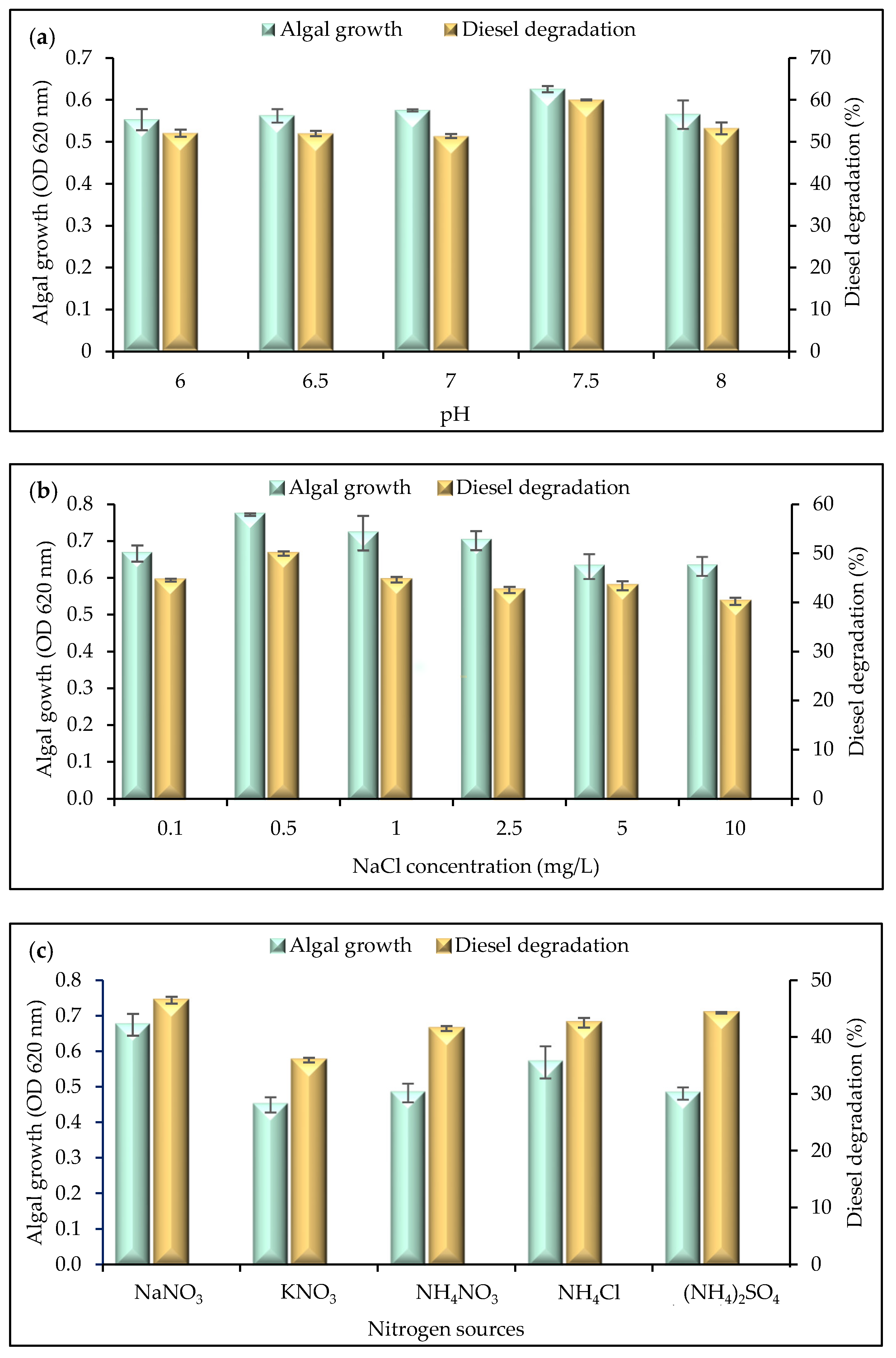


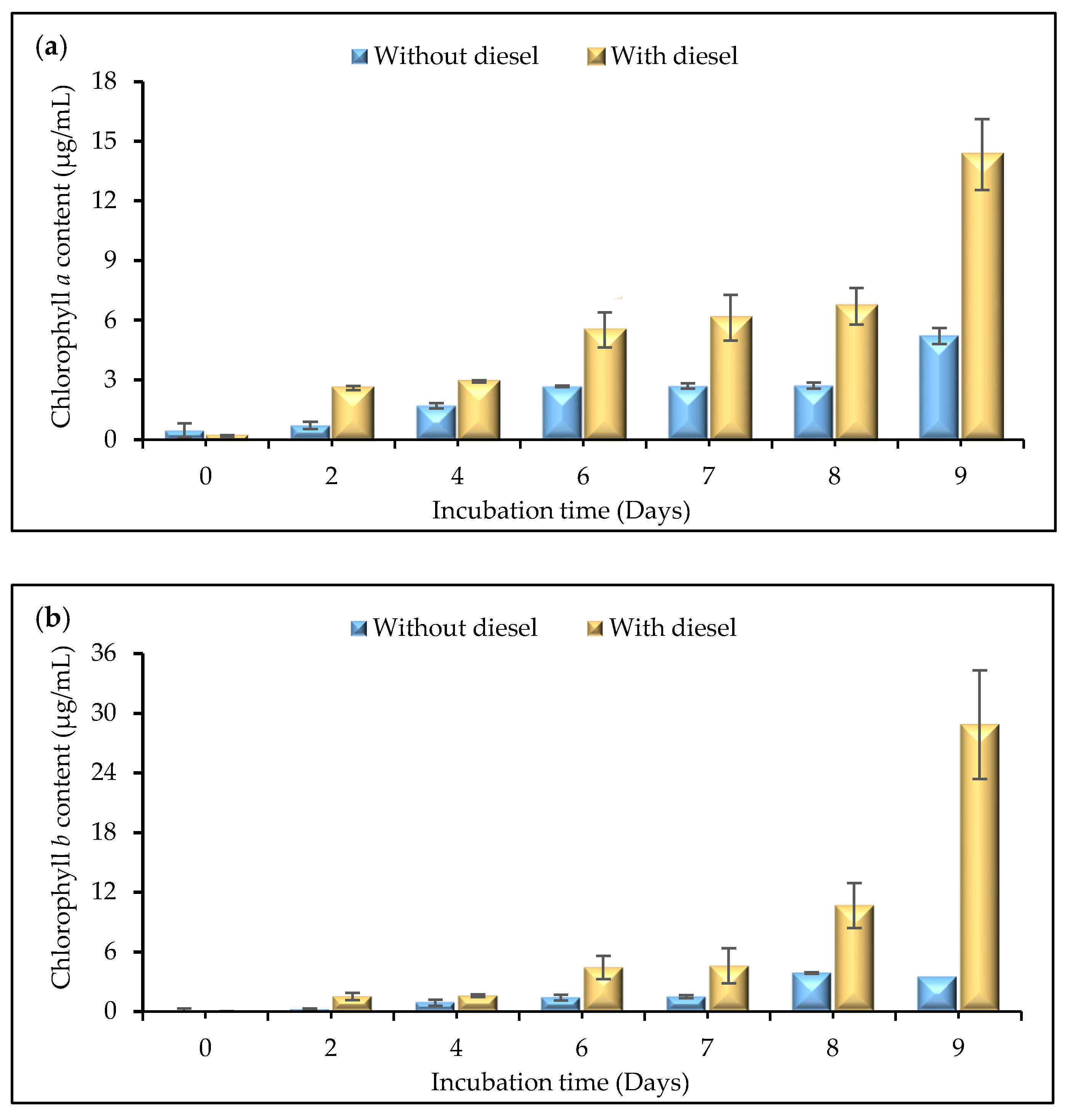

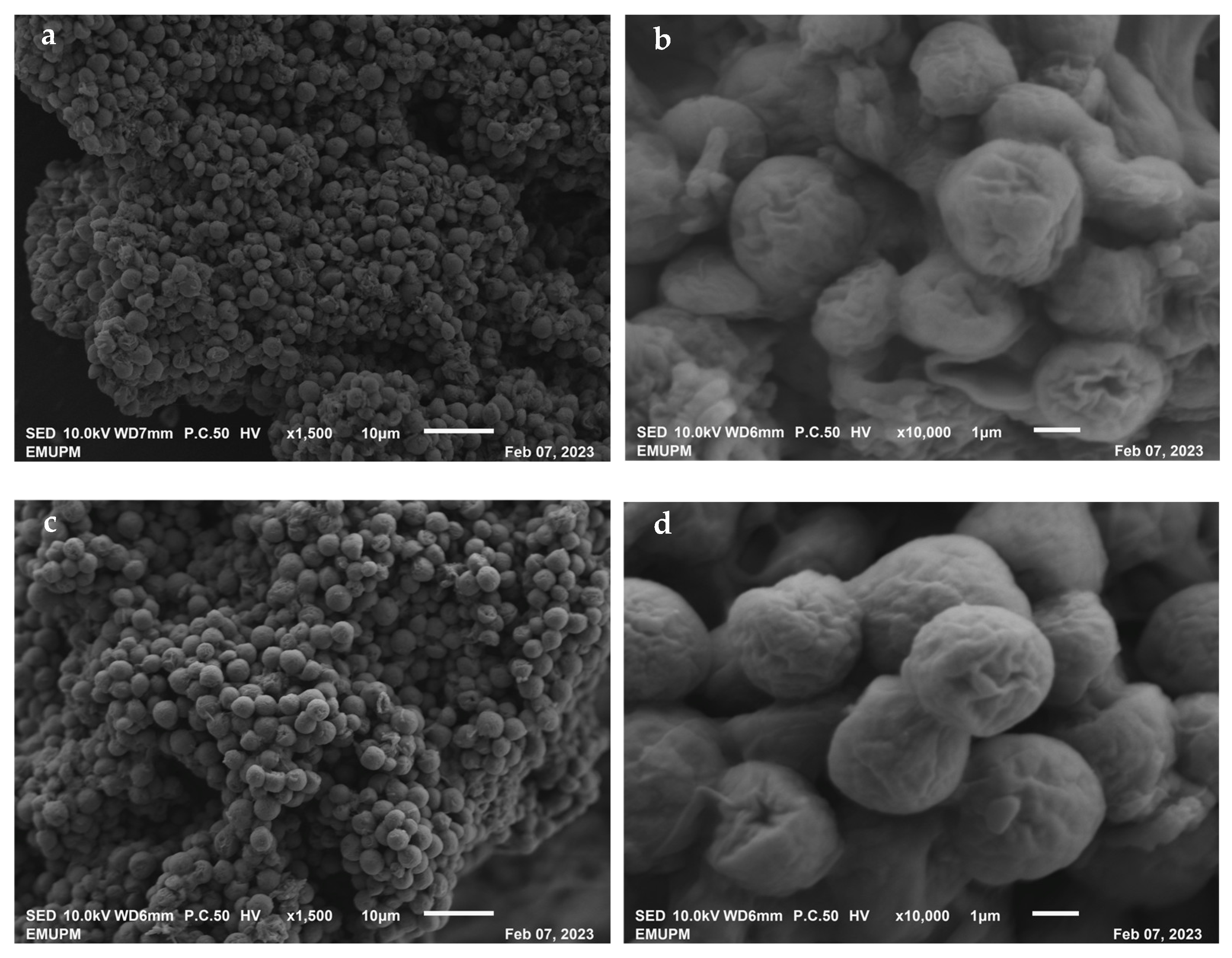

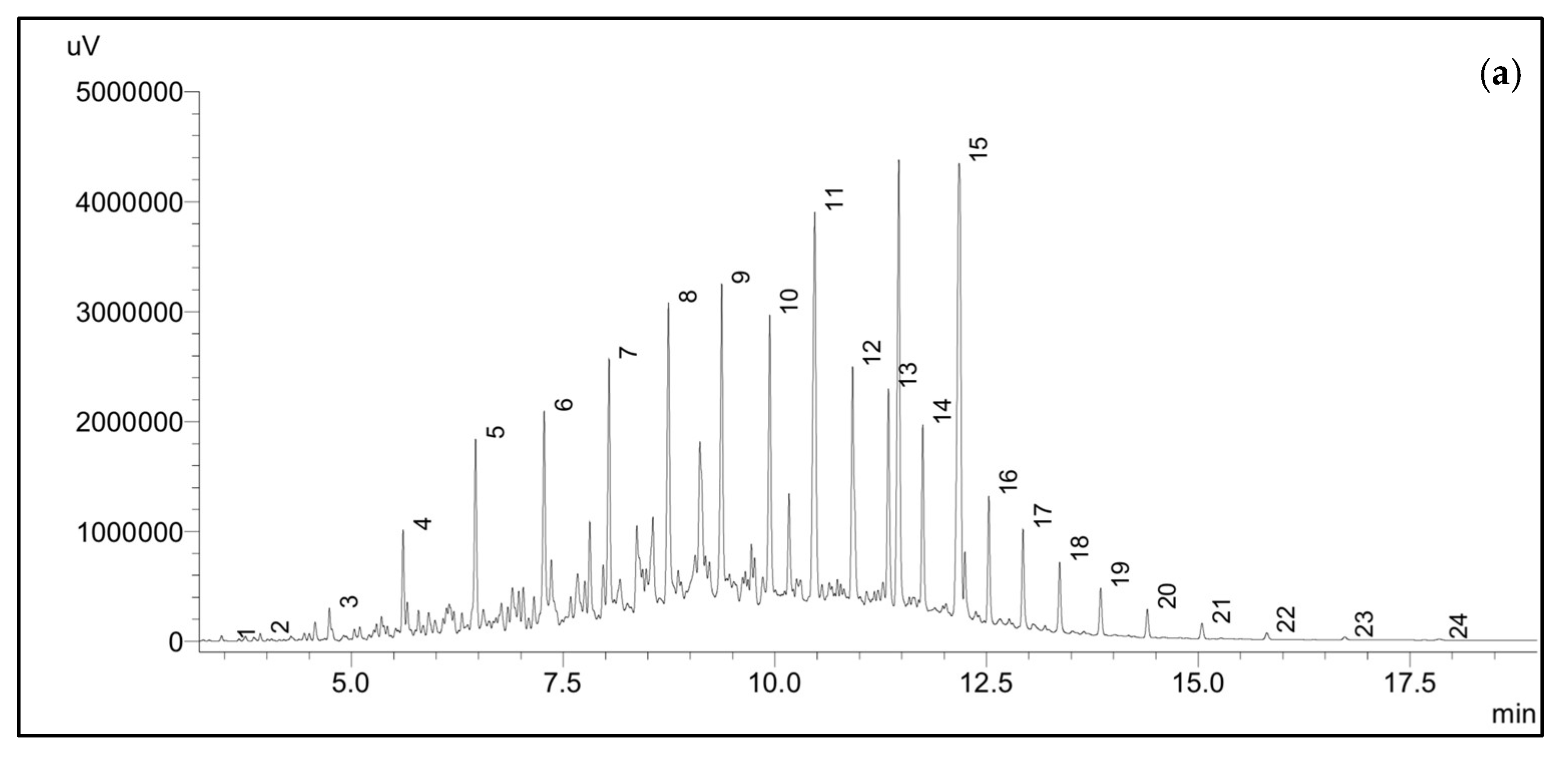
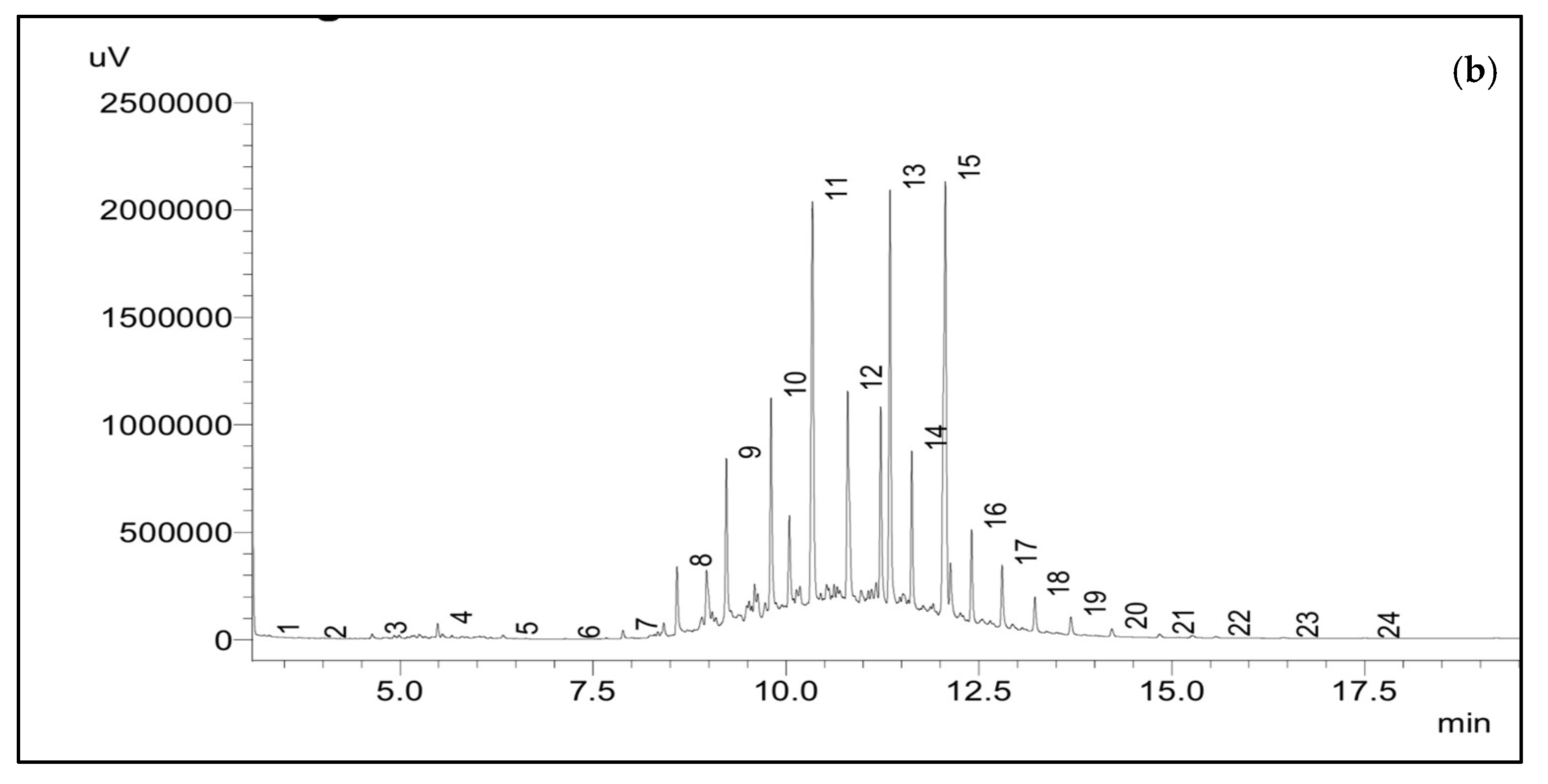

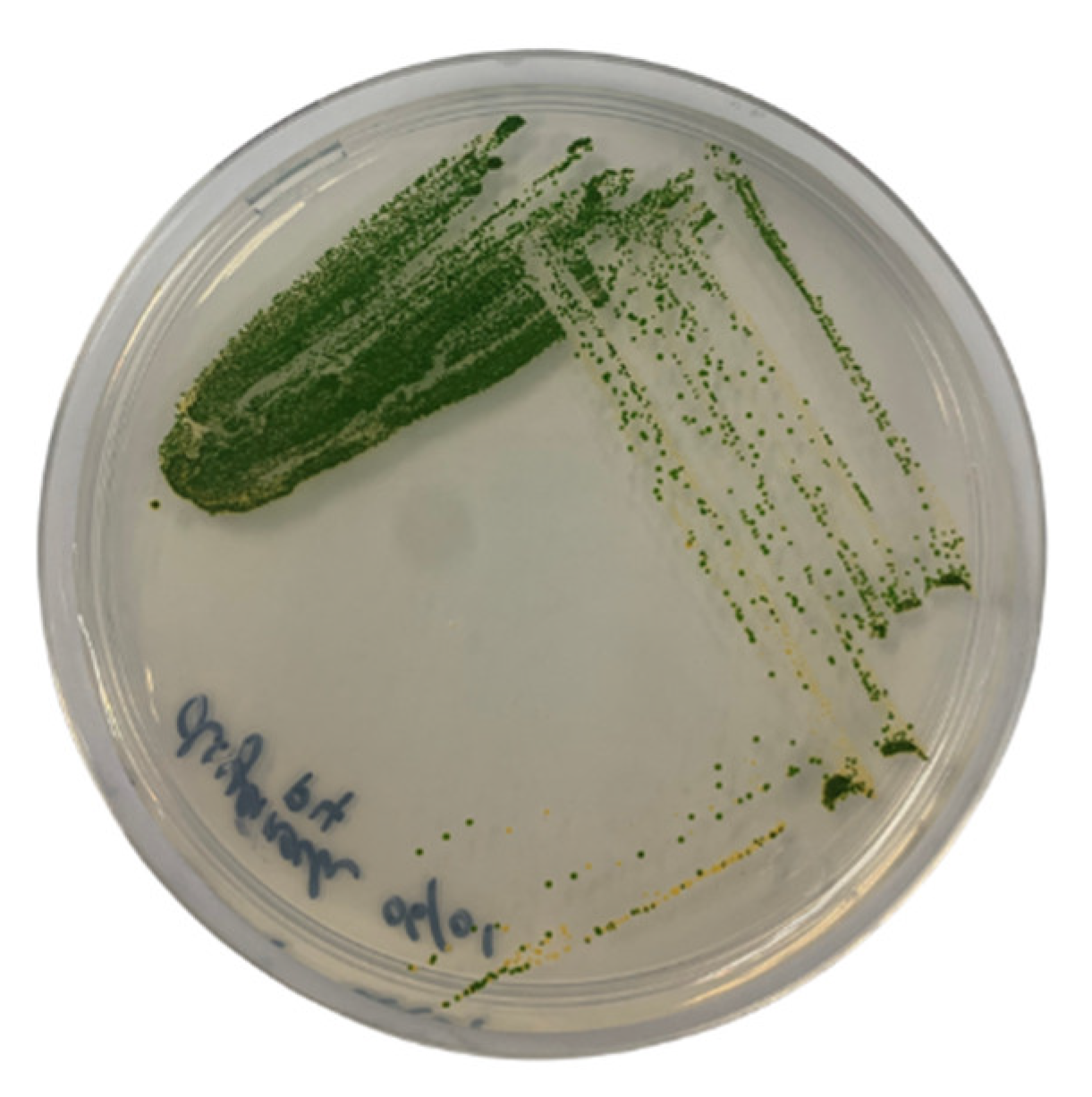
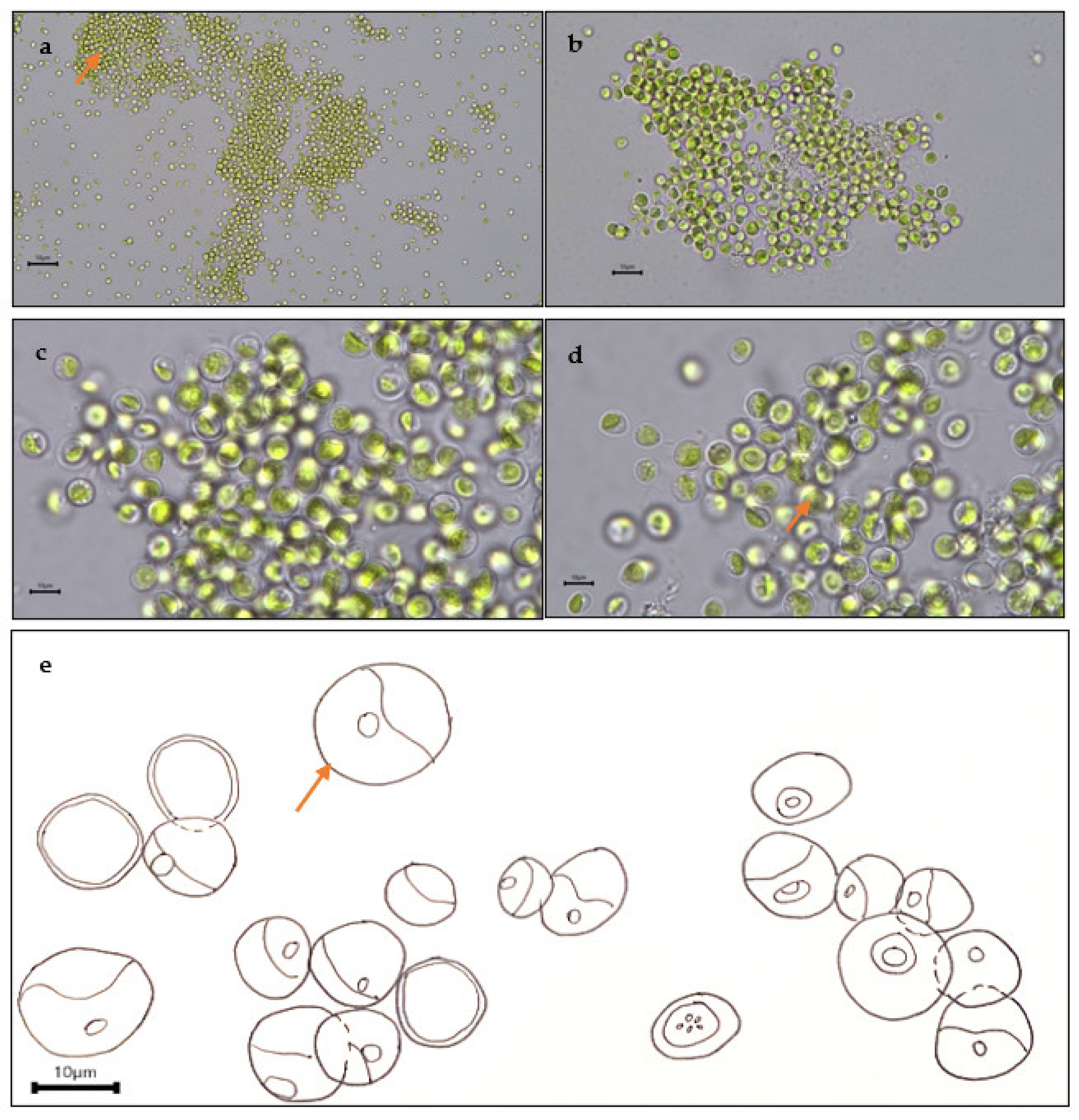

Disclaimer/Publisher’s Note: The statements, opinions and data contained in all publications are solely those of the individual author(s) and contributor(s) and not of MDPI and/or the editor(s). MDPI and/or the editor(s) disclaim responsibility for any injury to people or property resulting from any ideas, methods, instructions or products referred to in the content. |
© 2023 by the authors. Licensee MDPI, Basel, Switzerland. This article is an open access article distributed under the terms and conditions of the Creative Commons Attribution (CC BY) license (https://creativecommons.org/licenses/by/4.0/).
Share and Cite
Zamree, N.D.; Puasa, N.A.; Lim, Z.S.; Wong, C.-Y.; Shaharuddin, N.A.; Zakaria, N.N.; Merican, F.; Convey, P.; Ahmad, S.; Shaari, H.; et al. The Utilisation of Antarctic Microalgae Isolated from Paradise Bay (Antarctic Peninsula) in the Bioremediation of Diesel. Plants 2023, 12, 2536. https://doi.org/10.3390/plants12132536
Zamree ND, Puasa NA, Lim ZS, Wong C-Y, Shaharuddin NA, Zakaria NN, Merican F, Convey P, Ahmad S, Shaari H, et al. The Utilisation of Antarctic Microalgae Isolated from Paradise Bay (Antarctic Peninsula) in the Bioremediation of Diesel. Plants. 2023; 12(13):2536. https://doi.org/10.3390/plants12132536
Chicago/Turabian StyleZamree, Nur Diyanah, Nurul Aini Puasa, Zheng Syuen Lim, Chiew-Yen Wong, Noor Azmi Shaharuddin, Nur Nadhirah Zakaria, Faradina Merican, Peter Convey, Syahida Ahmad, Hasrizal Shaari, and et al. 2023. "The Utilisation of Antarctic Microalgae Isolated from Paradise Bay (Antarctic Peninsula) in the Bioremediation of Diesel" Plants 12, no. 13: 2536. https://doi.org/10.3390/plants12132536
APA StyleZamree, N. D., Puasa, N. A., Lim, Z. S., Wong, C.-Y., Shaharuddin, N. A., Zakaria, N. N., Merican, F., Convey, P., Ahmad, S., Shaari, H., Azmi, A. A., Ahmad, S. A., & Zulkharnain, A. (2023). The Utilisation of Antarctic Microalgae Isolated from Paradise Bay (Antarctic Peninsula) in the Bioremediation of Diesel. Plants, 12(13), 2536. https://doi.org/10.3390/plants12132536













